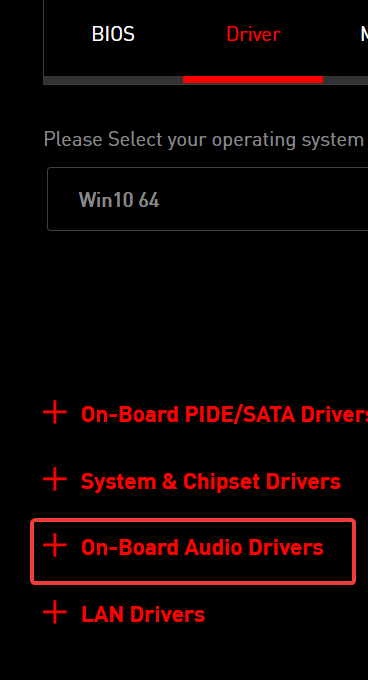Ken Brown Driver Download For Windows
Ken Brown identifies four substantive tools to improve volunteer retention.
Since its early history, the National Volunteer Fire Council (NVFC) recognized the pivotal role that recruitment and retention play in the volunteer fire service. For the past 15 years, the NVFC actively has researched and studied the behavioral drivers of why volunteers join and leave the fire service.
Portions of content provided by Tivo Corporation - © 2021 Tivo Corporation What's new. Surface Laptop Go; Surface Pro X; Surface Go 2; Surface Book 3.
Download Cannon Blast 3D for Windows to shoot down all bouncing sheep in allotted time. By Ken Brown Free. Download drivers for Wi-Fi device for Compal PCM10 laptop (Windows 7 x64), or download DriverPack Solution software for driver update Are you tired of looking for the drivers for your devices? DriverPack Online will find and install the drivers you need automatically. Downloads: 81 352: Download Now. Android unlock with Ken Brown Ulysses. How to upgrade Driver USB for Driver Laserjet P1102w Windows 7. Download Improve Your Handwriting for iOS to have you ever wished that your handwriting was better? Many of have done just that! This app has 130 easy to follow video lessons that are all.
Ken Brown Driver Download For Windows 7
In 2007, the NVFC, in partnership with the U.S. Fire Administration, published a report that cited the most frequent reasons why volunteers left their department. Up to that time, most of what we knew came from hypotheses and conjecture.
Ken Brown Driver Download For Windows 8
- Download: Recruiting and Retaining: The Future of Volunteer Fire Departments
After receiving a SAFER grant in 2015 to focus on volunteer recruitment (which resulted in the highly successful Make Me A Firefighter campaign), the NVFC received a second SAFER grant in 2018 to more aggressively target the retention aspect. As part of this, research was designed and conducted to identify the institutional drivers that cause volunteers to leave, the differing perceptions between leadership and rank-and-file volunteers, and what can be done to positively affect retention. This research culminated with a survey this year of more than 1,000 respondents, including leadership, current rank-and-file volunteers and former volunteers. Some of what was discovered reinforced existing hypotheses, but other results were surprising. We now are equipped with the data to develop real solutions that departments can use in their retention efforts.
Key findings
More than two-thirds of leaders and current rank-and-file respondents said that their department has a problem with retention. However, most leadership reported that their department doesn’t have a clear definition of retention nor a specific way to measure it.
Although the main reasons that were reported for staying were a desire to give back to the community and to help people, 47 percent of current volunteers said they considered leaving their department. The most common reasons that former volunteers who left cited were an environment that’s full of cliques that exclude others and department leadership that doesn’t support members.
When asked what could have a positive effect on volunteer retention, both current and former volunteers listed among their top choices: mentorship programs; giving awards/honors to members when they reach service milestones; conducting “stay” interviews with volunteers who have lapsed attendance; and conducting exit interviews when a volunteer leaves the department.
How to move forward
Based on the findings, we gain more understanding of challenges that we must overcome and what might work to improve retention moving forward. Departments must develop a clear definition of what retention success means for them, rather than use a generic measure that doesn’t relate to their circumstances and culture.
Ken Brown Driver Download For Windows 10
A negative department culture seems to play a significant role in why people leave. Leaders must understand the role that they and their team play in developing and carrying on a negative culture, which includes cliques and “the good ol’ boys club.”
Mentorship programs might be key to helping new members to feel welcome and to get acclimated as well as to bridge the gap between new and longtime members.
Uniform solutions are difficult
Although the report suggests some possible solutions that are based on the research findings, there are factors that might make the implementation of any single solution problematic. Each department must take its specific situation and needs into account when it creates solutions, so the solutions will be effective for its membership.
Another challenge: Because of constant understaffing, department leadership might focus more on recruitment than retention. It is arguable whether this is the best approach, however, because, without retention, you might end up spending a significant amount of time and effort recruiting and training a revolving door of members.

A few considerations that all departments should keep in mind are:
- Flexibility in training requirements and volunteering schedules are incredibly important
- A negative departmental culture is very influential in volunteers choosing to leave
- Mentorship programs, recognition efforts, and “stay” and exit interviews to understand the concerns of members are highly recommended
- Each department should develop a clear definition and measurement of retention that’s based on its circumstances and ideals
With the cost of training and the value that institutional knowledge brings, it isn’t in a department’s or the volunteer fire service’s best interest not to do all that’s in its power to retain its volunteers. It is time for some constructive change.
